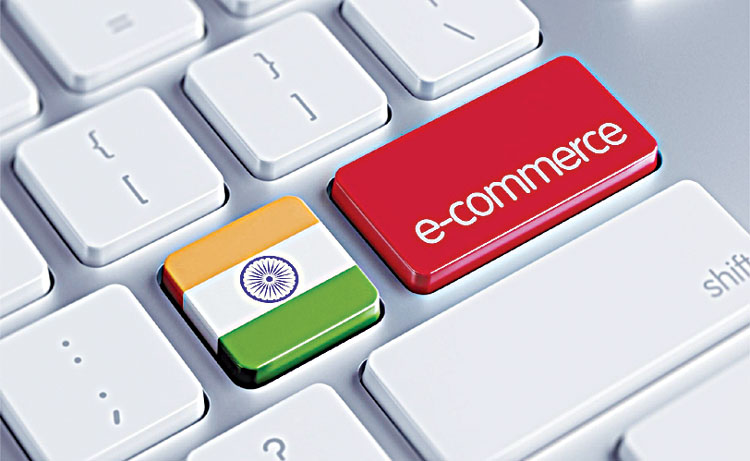Social commerce is a subset of electronic commerce that involves social media and online media that supports social interaction, and user contributions to assist online buying and selling of products and services. More succinctly, social commerce is the use of social network in the context of e-commerce transactions.

Social commerce is the buying and selling of goods or services directly within a social media platform. This model moves social media beyond its traditional role in the discovery process by encouraging users to complete the entire purchase process without leaving their preferred apps. Social commerce encourages people to connect with a business through two-way communication. This allows customers to not only engage with your business, but it also gives them the opportunity to use social media as an efficient customer service channel where it’s possible to solve problems. E-commerce refers to a shopping experience via a website or dedicated branded app. Social commerce, by definition, allowing the customer to make their purchase within their social media experience. Social commerce is not e-commerce. We forecast that US retail social commerce sales will rise by 34.8% to $36.09 billion this year, representing 4.3% of all retail ecommerce sales. We also revised our 2020 social commerce forecast upward, from 19.8% growth to 37.9% growth. Because 91% of users trust other users and their opinions. Social commerce puts both your promotion and user-generated content in the form of comments, likes, and shares into one place which will continue to grow the effectiveness of your campaigns as time goes by.
India primarily shops from the unorganised retail, the local mom-and-pop stores. Currently out of total retail of $850 billion, unorganised retail accounts for 88 per cent. India’s e-commerce growth will mimic that of China with a major boost coming from small sellers; China’s unorganised retail is ~80%. While most of the e-commerce marketplaces have been search-led, increased social reach and discovery are the macro trends across the globe powering commerce. This is product-discovery-led, not so much brand discovery. Social commerce presents a great opportunity for customers and sellers to discover one another. Most consumers do not know what they are looking for and are not loyal to specific brands.
In China, social commerce has emerged as a big winner, growing from $10 billion, i.e. 1% of e-commerce in 2015, to $250 billion, i.e. ~10% of e-commerce value in 2020, based on industry reports. There are very successful social commerce channels in other countries like Pinduoduo (China), Taobao.com (China), Shopee (Indonesia), Shopify (Canada). In tier 2 cities and beyond, social commerce platforms like in China, with their affordable, low-cost, unbranded, vast product offerings and unstructured, long tail categories can help bring in the customers at the bottom of the pyramid. Online penetration of retail in India is expected to reach 10.7% by 2024, versus 4.7% in 2019. China’s online penetration rate was 45% and the USA 20% in 2020. Social commerce in India, which is currently valued at $1.5-2 billion will be worth as much as $20 billion by 2025 at a CAGR of 60%, touching nearly $70 billion by 2030 at a CAGR of 30%, as per Bain and Sequoia’s December 2020 report.
To put it differently, India’s social commerce sector will be two times the size of the current e-commerce market within ten years. Digitally connected Indians spend an average of three hours per day online, of which more than two hours are consumed by messaging, social media networking and watching videos. Women, the new class of consumer, now have the final say in more than half of the household decisions and they now form almost half of the online shoppers. Social commerce is the process of selling products directly on social media. The entire shopping experience — from product discovery and research to the check-out process — takes place right on a social media platform. Social commerce allows the customer to make their purchase within their social media experience. Currently, social apps that allow for social commerce include WhatsApp, Instagram, Facebook, and Pinterest.
The USP of local shops is trust and curation. Social commerce helps to build the trust factor through its personalised marketing through resellers online, which is the biggest inhibitor of e-commerce. It enables social behaviour-led insights to deliver curated, personalised shopping experiences. Recommendations from relatives and friends are a big driver of action, and impulse purchases present an opportunity for sellers. Ease of use, convenience, variety, cheaper prices and bridging the trust deficit by curated, personalised shopping experiences with a fun element are major customer drivers of social commerce. Ease of selling, reach of platforms, improved order-taking/management processes and customer insights to enable curation are key drivers for sellers looking to scale. While India is poised for a strong growth in e-commerce, currently less than 10% out of India’s 80+ million small businesses sell online (including mom and pop stores), while less than 15% of Indian retail market is organised.
If we look at other countries such as the Shopee platform, which is just 6 years old, has 10 million online sellers in Indonesia, which has less than one-fifth of India’s population. Pinduoduo in China has 15 million sellers in less than 5 years. Today, 85% of sellers using social commerce are small, offline-oriented retailers who have found that social channels open new markets as against the larger, organised seller base on e-commerce platforms. These small retailers supplement their existing offline business with online channels and drive upto 35% of their sales through social commerce. Social commerce will empower over 40 million small businesses and entrepreneurs, expanding their reach and supplementing their existing income from other channels, as per the Bain & Co and Sequoia Capital report December 2020. Meesho, which recently turned a unicorn, is India’s leading social commerce channel for unorganised and unbranded retail. With its unique marketplace model, it empowers women entrepreneurs to start their business with zero investment. Other Indian players in this space include DealShare, BulBul, GlowRoad, Mall91, Simsim, etc. Social commerce has the potential to bridge the digital gap in the tier 2 cities and beyond, allowing for inclusive growth along with the empowerment of women. As a pioneer of the world-leading Digital Payments Revolution, India can integrate small suppliers and entrepreneurs along the length and breadth of the country with social commerce, tapping markets and customers dissolving geographical boundaries. The government should wholeheartedly, encourage and provide a supportive regulatory framework to social commerce platforms, in our quest to achieve a $5 trillion economy.

